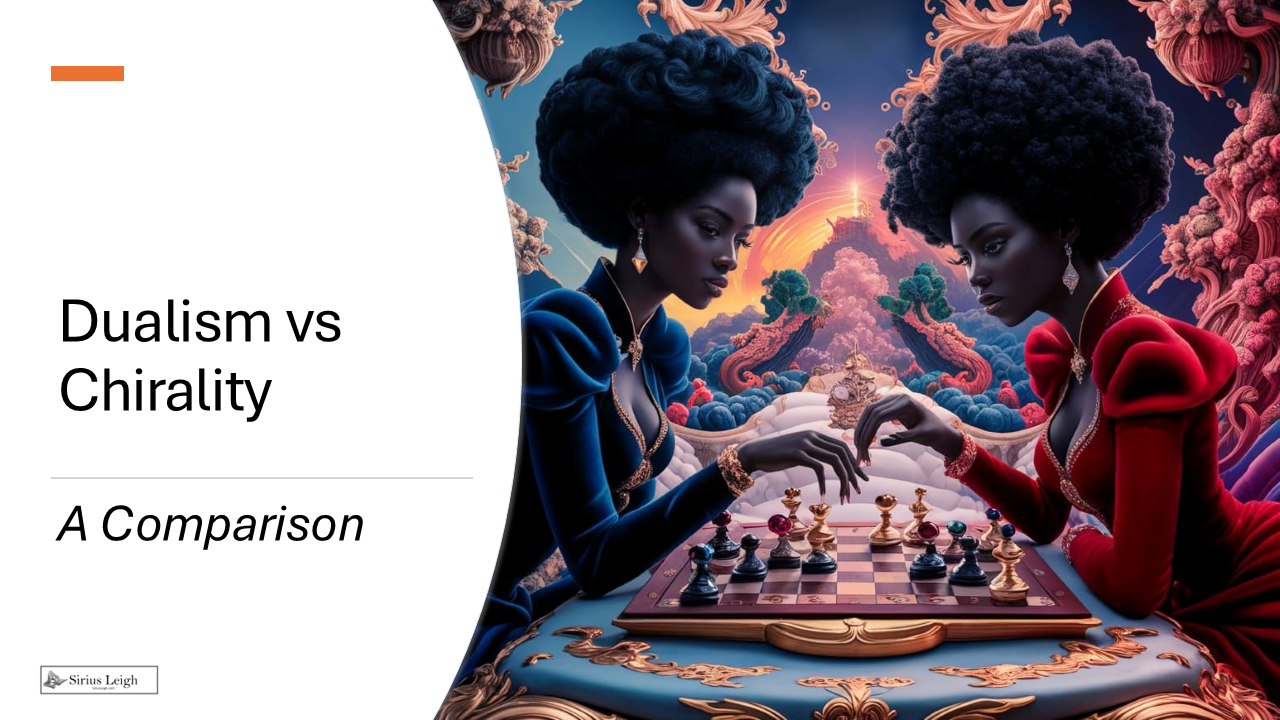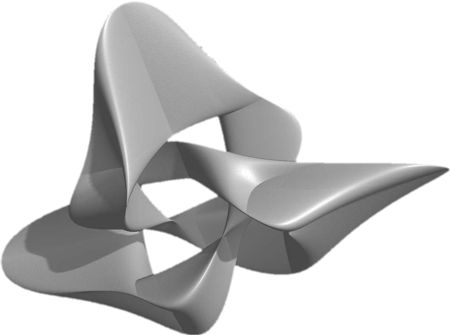
Dualism vs Chirality
The classical dualism of mind and body (as in Cartesianism) holds that the mental and the physical are two fundamentally different kinds of substances or properties.
In contrast, viewing the mind–body relationship in terms of chirality considers that, rather than being entirely separate realms, the mind and body are like chiral pairs—complementary but non-superimposable aspects of a single reality.

Below are some key points of comparison:
1. Ontological Commitment
- Dualism:
- Separate Substances: Mind and body belong to entirely different categories (e.g., the immaterial vs. the material).
- Interaction Problem: One of the central challenges is explaining how two radically different substances can causally interact.
- Chirality:
- Complementary Asymmetry: Rather than being independent substances, the mind and body are seen as two interrelated “orientations” or facets of the same system.
- Non-superimposable Pair: Much like left and right hands, each aspect is distinct and “handed”—they relate to one another in a way that is inherently asymmetric yet complementary.
2. Nature of the Relationship
- Dualism:
- Binary Separation: Emphasizes a clear-cut divide between the mental realm (subjective experience, intentionality) and the physical realm (material processes, bodily functions).
- Problem of Integration: Faces difficulties in accounting for how mental intentions can lead to physical actions and vice versa.
- Chirality:
- Dynamic Interdependence: Suggests that the mind and body, while different, are interlocked in a relationship that is more about orientation than about a stark divide.
- Inherent Directionality: The asymmetry implies that each “side” informs the other in a specific, non-equivalent manner—much like how the properties of chiral molecules depend on their handedness.
3. Explanatory Goals
- Dualism:
- Clear Distinction: Aims to explain phenomena like consciousness and subjective experience by positing an entirely separate realm (the mind) that cannot be reduced to physical processes.
- Metaphysical Gap: Often leaves open questions about how these two realms interact or influence each other.
- Chirality:
- Integrated Perspective: Attempts to capture the lived experience of being both embodied and conscious.
- Bridging the Gap: Offers a metaphorical framework in which the “handedness” of mind and body underscores a natural asymmetry—a relationship where each side is distinct yet inseparable in forming a unified self.
4. Alignment with Modern Thought
- Dualism:
- Historical Legacy: Has been influential historically but often stands at odds with contemporary scientific views that lean toward physicalism or monism.
- Mind–Body Problem: Continues to provoke debate, especially given challenges in neuroscience and cognitive science.
- Chirality:
- Scientific Metaphor: Draws on concepts from physics and chemistry (like the chirality of molecules) to illustrate how asymmetry can be fundamental yet integrated.
- Embodied Cognition: Resonates with modern approaches that emphasize how cognitive processes are deeply rooted in bodily experience and environmental interaction.
5. Critiques and Challenges
- Dualism:
- Interaction Issue: How can something non-physical affect the physical world without violating known laws of nature?
- Reductionism Pressure: Modern neuroscience often challenges dualism by showing extensive correlations (and possible causal links) between brain activity and mental states.
- Chirality:
- Metaphorical Limits: While the chirality analogy is attractive, it may be criticized for being more metaphor than fully developed ontology.
- Conceptual Clarity: My challenge is to move beyond metaphor and articulate precisely how the asymmetry between mind and body operates. At this point a metric can not be provided until enough people pass through this psychological phenomenon. Scientist can not begin to measure that which they have yet to see.
While dualism sharply divides mind and body into two distinct realms, the chirality perspective offers a nuanced view where the mind and body are interdependent yet inherently asymmetric—like a pair of non-superimposable mirror images. This latter approach attempts to reconcile the undeniable differences between mental and physical phenomena with the undeniable interconnection of our embodied experience.
Each framework has its strengths and challenges, and the choice between them often depends on whether one prioritizes clear ontological distinctions or a more integrated, dynamic understanding of human existence.
